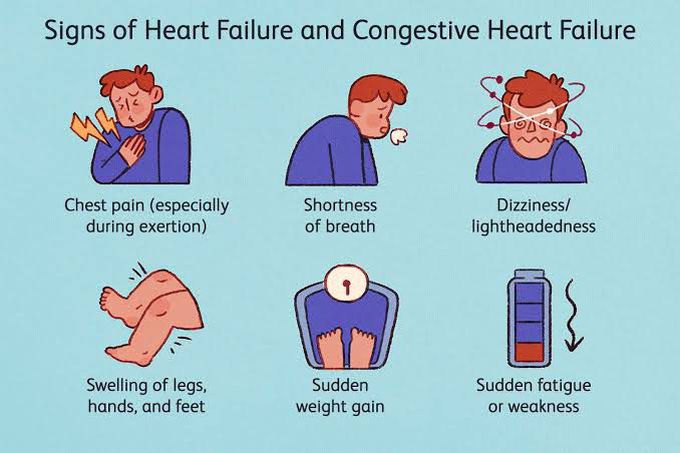

Hunainover 3 years ago

Symptoms of heart failure
Heart failure can be ongoing (chronic), or it may start suddenly (acute). Heart failure signs and symptoms may include: Shortness of breath with activity or when lying down Fatigue and weakness Swelling in the legs, ankles and feet Rapid or irregular heartbeat Reduced ability to exercise Persistent cough or wheezing with white or pink blood-tinged mucus Swelling of the belly area (abdomen) Very rapid weight gain from fluid buildup Nausea and lack of appetite Difficulty concentrating or decreased alertness Chest pain if heart failure is caused by a heart attack
Other commentsSign in to post comments. You don't have an account? Sign up now!

